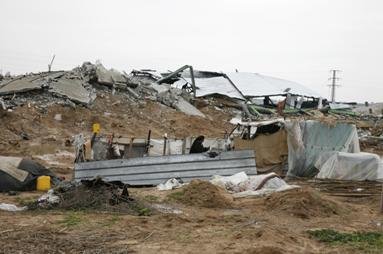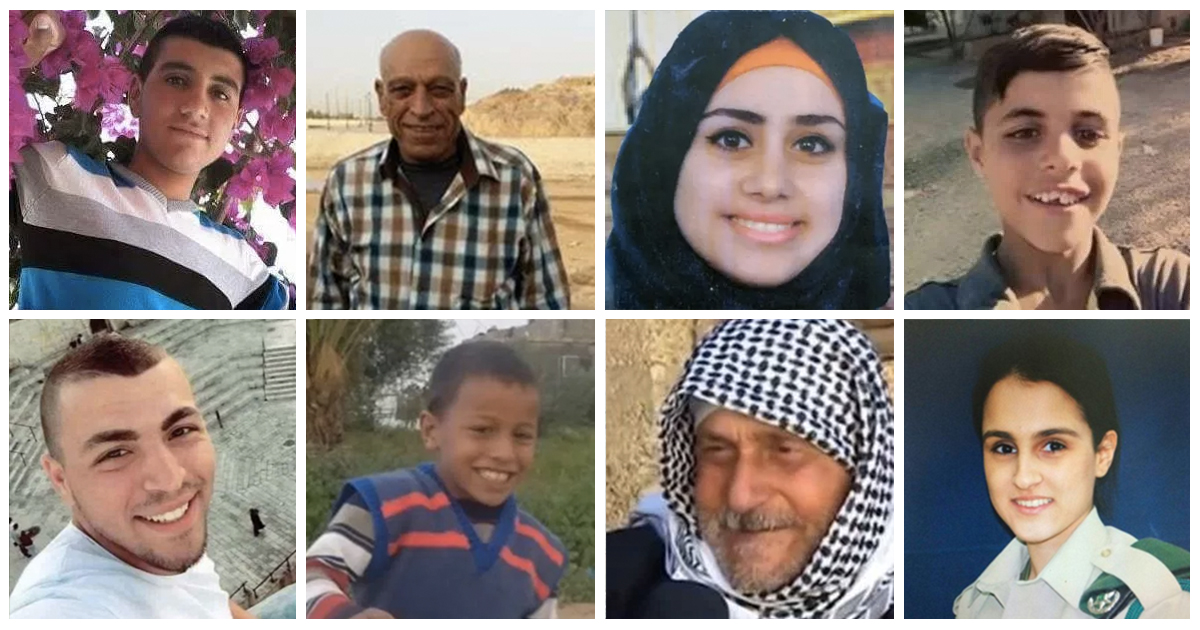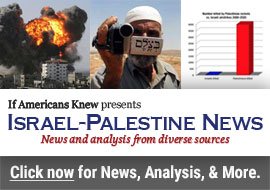| Donate | Contact Us | Materials | Subscribe | Israel-Palestine Timeline | Israel-Palestine News | |
 |
|
Aftermath
|
|||||||||||||||||||||||||||||||||||||||||||
 |
The only surviving photograph of 13 year old Hammad Silmiya, taken when he was seven. ©Malian |
On the 14 of February 2009, almost a month after Israel declared a unilateral ceasefire in Gaza, thirteen year old Hammad Silmiya was grazing his sheep and goats in northeast Gaza, about 500 metres from the border with Israel. An Israeli military jeep patrolling the border opened fire on him and his teenage friends. Hammad was shot in the head and he died almost instantly.
Hammad’s death barely made the news – just another casualty in the Gaza Strip, where civilian injuries and deaths continue to mount daily. His family had already endured the killing of Hammad’s grandmother, his two cousins, aged four and eighteen months, and the destruction of their homes and livestock during Israel’s offensive.
“It was Saturday morning and Hammad woke up at six,” says Hammad’s aunt Jomai’a, 40. “He left with his brother and a couple of young friends to graze the animals. At around ten in the morning Hammad was preparing some breakfast in the field like he always did. An Israeli military vehicle fired at them and shot him in the head.”
Jomai’a pulls out a plastic bag from the folds of her black shawl and unties the knot. Inside a small envelope is the only remaining photograph they have of Hammad, taken when he was seven years old. More recent photographs of him were lost in the rubble of their home.
“Hammad was like a beloved son to me because I have no children of my own and he always slept beside me,” says Jomai’a. “Whenever he needed anything, he would ask me. They used to say Hammad didn’t have just one mother, he had two – his real mother, and I. Hammad owned a part of my heart and it went with him when he died.”
 |
Hammad’s aunt Jomai’a (left) and mother Salma (right). ©Malian |
Hammad had left school just a few months ago to work fulltime as a shepherd and help his family. “I tried to force him to go back to school but all he cared about was working with the goats and riding his donkey,” says Jomai’a. “He was so good with animals. Whenever he came home from school, he’d throw his bag in the house and run to be with the animals. The night before Hammad was killed I dreamt about a wedding ceremony, which in our culture is a bad omen. When they told me Hammad was injured I knew that he had been killed because I had seen him as a bridegroom in my dream.”
Hammad’s mother Salma sits beside Jomai’a in the makeshift shelter the family has set up beside the remains of their homes in Hay-as-Salama, northeastern Gaza. All around them are scenes of utter devastation. This Bedouin family came to Gaza as refugees from Beersheva in 1948 and settled in the Hay-as-Salama area. Prior to the latest Israeli offensive they had concrete homes and livestock farms beside the buffer zone, which was the first area to be hit during Israel’s ground offensive in January 2009.
“Tanks began firing at the area at two in the morning on the 5 of January,” recalls Jomai’a. “The first bomb hit our house and I ran to my mother’s room because she is 80 years old and bedridden. Then a second shell hit the house and we had to run, leaving her behind. We were like scared goats whose stable door had been opened. We fled to Jabaliya and then to Zeitoun where we sheltered in schools. Every day I begged ambulances and medics to help me go and evacuate my mother. I even said I would walk in front of the ambulance, carrying a white flag, but it was too dangerous and they refused.”
When the Silmiya family returned to the area on 18 January, they found their row of houses had been flattened by F-16 airstrikes and it took them three days to uncover Hammad’s grandmother from the rubble. Hammad was buried next to his grandmother just a few weeks later.
Due to this area’s proximity to the border, few donors have come to assess the damage or provide assistance. The nearest refugee tent camp is unsuitable for the Silmiyas because they need to be near their animals and Bedouin families prefer to live alone.
 |
The Silmiya shelter in front of their bombed house. ©Malian |
“The war is not over,” says Hammad’s mother Salma. “There is no quiet time in Gaza and we often see F-16s in the sky. But Hammad was never afraid. He was strong and full of energy. His younger brother says he wishes the Israelis had killed him instead because everybody loved Hammad. He also refuses to take any food or tea with him now when he goes shepherding because Hammad was making breakfast when they shot him.”
In the days before his death Hammad had been upset about his donkey that was killed during the Israeli ground invasion along with sixty goats and three cows belonging to his father Barrak Salem Salaam Silmiya, whose three surnames are all derivatives of the word ‘peace’ in Arabic. “We want peace, but where is it? Where are human rights in Gaza?” asks 47-year-old Barrak as he shows us the animal remains still floating in the mud around the ruins of his house.
 |
Hammad’s father Barrak Salem Salaam Silmiya, surrounded by the carcasses of his livestock and the remains of his home. ©Malian |
“Hammad was 13 years old. In anyone’s eyes he looked like a child, but they still shot him. He was very bright and he was great with animals. He even used to sell our milk and cheese in the market. What more can I tell the world about my son? How can I speak about him? Big countries can’t even stop Israel so what can I do? I feel like I’m nothing. This area was just houses and a street. Were these goats fighters? There’s nothing left...”
As Barrak turns to walk away Hammad’s mother Salma rises to her feet: “These fifteen days since Hammad died have felt like five hundred. Hammad was dark, and he was beautiful. Food has no taste anymore.”
“Everybody who saw Hammad that morning before he was killed said his face had looked particularly beautiful,” adds his aunt Jomai’a. “This is not a war against a strong government or country. Israel kills us like we are animals and dogs and nobody stands with us.”
| Israel-Palestine Timeline |
 |
Israel-Palestine Timeline: The human cost of the conflict records photos and information for each person who has been killed in the ongoing violence. |
| History of the Israel Lobby |

Buy it on Amazon, and visit the book website for reviews, more ordering options, and upcoming author events. |
| IsraelPalestineNews.org |

Information largely missing from U.S. news reports. Read the Blog |
| The History of Terrorism |
| Related Articles |
Palestinian human rights NGOs condemn Beit Hanoun Massacre; call for international investigation |
68 women gave birth on checkpoints, 34 infants and 4 women died |
| Additional Resources |
Amnesty International – Shielded From Scrutiny: IDF Violations in Jenin and Nablus |
Amnesty International – Israeli Settlers Wage Campaign of Intimidation |
| Organizations |
| Stay Informed |
|
Sign up for our mailing list and receive an email whenever we post a new article on our news site, Israel-Palestine News. |
If Americans Knew distributes and posts to our website copyrighted material, sometimes without the permission of the copyright owner. We are making such material available in our efforts to advance understanding of the Israel/Palestine conflict. We believe this constitutes a ‘fair use’ of any such copyrighted material as provided for in section 107 of the US Copyright Law since it is being distributed without profit for purely educational purposes. For more information go to: http://www.law.cornell.edu/uscode/17/107.shtml. If you wish to use copyrighted material from this site for purposes of your own that go beyond ‘fair use’, you must obtain permission from the copyright owner.
This website is printer-friendly. Please Print this article and share it with your friends and family.